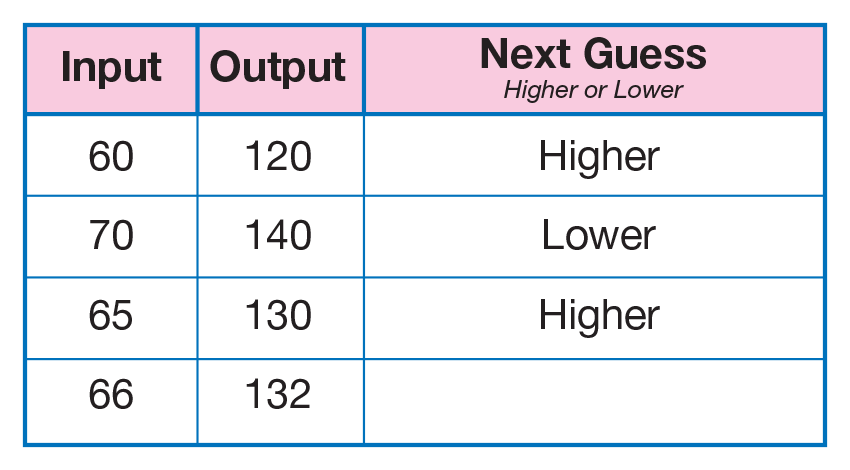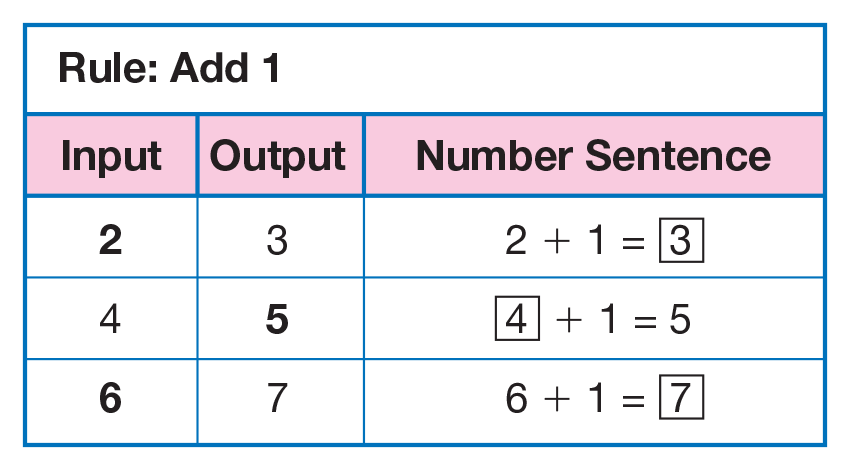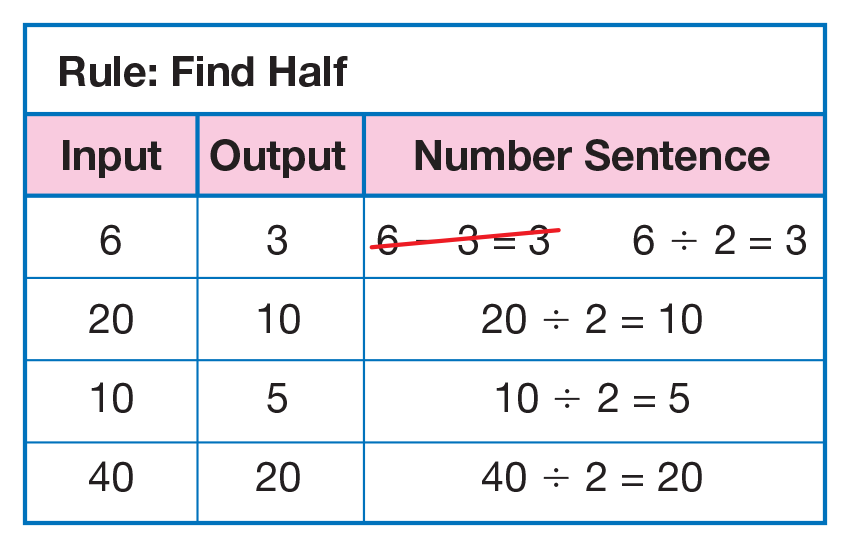Rule Machines
Est. Class Sessions: 2Developing the Lesson
Part 2: Other Rules on the Rule Machine
Introduce Other Rules. Use the display of the Rule Machine Master to help students learn to apply other rules to numbers and write number sentences for the function. Some possible rules are: add 10, subtract 7, and subtract 20. Have students learn to develop rules from data and also to generate data from rules.
Work through one or two examples as a class. Begin with some easy rules such as add 1 or subtract 2 and as a class fill out the rule machine data table for that rule.
Ask:
See Figure 6 for a sample +1 rule machine with number sentences.
Find the Rule. Use the display of the Rule Machine Master to provide a data table with some completed lines and ask students to find the rule for the machine. Some students will probably want to guess your rule right away, without any data. Encourage students to make guesses based on the data you provide. Ask students to look at the data and determine the rules that might fit the rule machine. See Figure 7 for a sample data table.
Ask:
As students suggest rules that might fit the input-output numbers, write the rule in the box above the input and output numbers and write the number sentences in the third column. Have students test the rules with all the numbers on the data table. Students can adjust their guesses and eliminate rules that do not fit. Remind students that a rule has to work for all the input numbers on the table. It may also be necessary to adjust the number sentences after students discover the rule that fits all the numbers. For example, for the sample data table in Figure 7, if a student thought the rule was to subtract 3 and suggested the number sentence 6 − 3 = 3, the number sentence should be adjusted to 6 ÷ 2 = 3 to fit the halving rule. Use the Sample Dialog as a guide for this discussion.

















